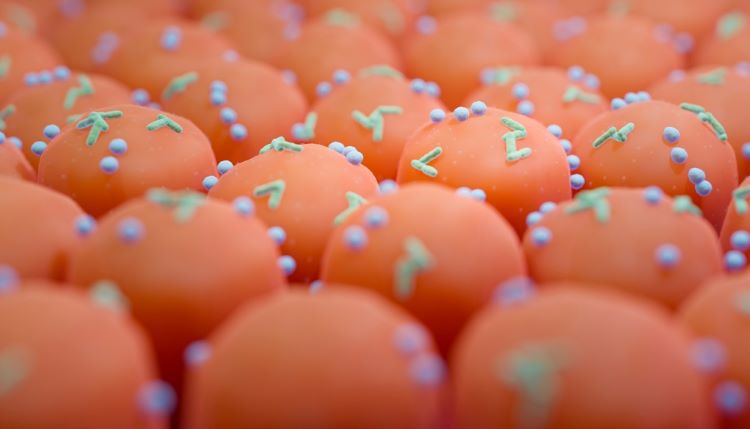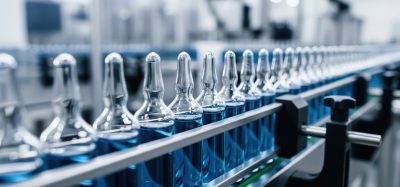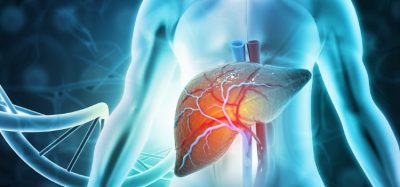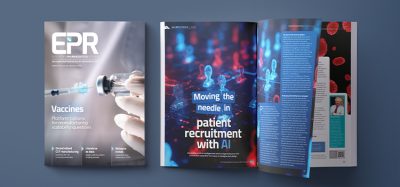Navigating the unique CMC challenges of oral anaerobic live biotherapeutics
Posted: 14 February 2024 | Mike Frodsham (SGS Quay Pharma), Ryan Wilson (SGS Quay Pharma) | No comments yet
Here, Chief Technical Officer, Mike Frodsham and Ryan Wilson, Head of Microbiome Services at SGS Quay Pharma, explore the chemistry, manufacturing, and control (CMC) challenges of developing drug products containing live anaerobic bacterial strains, used for treatments such as microbiome therapeutics.


The development of drug products containing live anaerobic bacterial strains as the active pharmaceutical ingredient and where potency and shelf-life is typically associated with viable cell quantification, poses unique challenges when compared to both small and large molecule development therapeutics. It is the uniqueness of the strain and perceived inter-cellular variations (sub-populations) resulting from high viable cell densities during growth (fermentation) and the subsequent harvest and downstream processing of cells that gives rise to batch-to-batch variations. Achieving drug substance and drug product reproducibility is a major challenge to be overcome during product development and clinical supply of live biotherapeutic (LBP) therapies.
Challenges of developing live biotherapeutic (LBP) therapeutics
Achieving drug substance and drug product reproducibility is a major challenge to be overcome during product development and clinical supply… [of] live biotherapeutic (LBP) therapies”
Over the past 10 years, more than 150 clinical trials1 have been initiated to evaluate the clinical potential of various LBPs. The first drug products to achieve biological licence approval (BLA) from the US Food and Drug Administration (FDA) are whole community products derived from human faecal matter and are indicted for Clostridium difficile infection. Despite the recent focus, LBPs of defined compositions are yet to be approved for commercialisation for any target indication. Many challenges face developers which are unique to the delivery of live anaerobic strains.
Firstly, the pharmacological response to LBPs does not follow traditional pharmacokinetic principles. Instead, such products are hypothesised to interact with a complex array of localised factors relating to the microbial secretome,2 quorum-sensing networks3 and mucosal interactions relating to various gut-host benefits. From a CMC perspective, we enter the paradox where everything we do is geared to protect and stabilise the strain to maximise the potential for later bacterial proliferation following administration. Generally, the opposing principle for any other type of drug product where live bacteria is the last thing we want to administer.
LBP drug substance production considerations
Lead candidate strains are often isolated from healthy human subjects to establish a master cell bank (MCB). Drug substance is produced from the MCB via fermentation/cultivation type processes followed cell recovery and drying. In most instances the activity/potency is quantified as viable cell content where the target colony forming units (CFU) of the dry mass tend to be in the region of 108 to 1011 CFU per gram.
Despite the use of a well characterised MCB as the starting point for drug substance processing, not all cells are homogenous following batch production. Often a heterogenous population exists where different sub-populations may behave differently under the same environmental stress.4 During the various process steps involved in drug substance production, multiple variables may be introduced to optimise a process.
Drug substance processing
During fermentation, anaerobic conditions may be optimised to produce a high density of viable cells. However, minimising the non-viable cell ratio during the exponential phase can be difficult. Non-viable cells cannot be separated from viable cells and will be subsequently processed and influence the physical characteristics of the drug substance following subsequent process steps. Separation and concentration of cells from the growth media is typically performed via filtration or continuous centrifugation. The processing duration can affect viable/non-viable ratios and the heterogenous cell dynamic stability which ultimately leads to the cumulative loss of viable cells. Finally, when formulating the concentrated cell mass into a suitable aqueous cryo-formulation for freeze drying, or formulation suitable for spray drying/other drying process, further stresses the cell mass. The selection and concentration of microencapsulation aids,5 freeze or thermal based process stresses and downstream powder handling can have notable effects on cell viability.
… [a big challenge of live biotherapeutic (LBP) therapies is] characterisation of stress-induced cells and correlating this to subsequent process response and drug product stability predictions”
When attempting to stabilise a strain or improve yields etc, a high variability in viable cell count between batches is possible, and where positive outcomes (high titres produced) are achieved, these are not always reproducible. The cause of such variability can be difficult to correlate due to the inherent number of variables within a step and the stress that these process variables may induce on a sub-population.
While analytical techniques are commonplace to quantify ratios of viable verse non-viable cells, the characterisation of stress-induced cells and correlating this to subsequent process response and drug product stability predictions is a much bigger challenge.
Drug substance characterisation
Quantification of batch potency can be difficult for anaerobic strains. Establishing and maintaining strain specific anaerobic growth conditions can be a challenge to perform routinely and the nature of plating and cell counting methodology is inherently imprecise. As previously highlighted batch-to-batch variability in potency is expected, however, the compounding effect of method related variability in quantification makes root cause analysis even more difficult when trying to identify those parameters/conditions for process establishment/scale up.
Selecting a characterisation method
Therefore, a range of methods are essential to characterise strain/batch potency ranging from classical growth techniques to staining (live and dead cell), automated cell counting (eg, flow cytometry) and the more recently adopted polymerase chain reaction (PCR) approaches such as quantitative PCR. Verification of these methods is important as the ‘sample’ for analysis changes as different excipients are added at the drug substance and drug product stages with potential for log differences in potency between bulk drug substance and drug product at release and possibly shelf life.
Orthogonal approaches to batch characterisation help to ensure that trends in data can be identified and understood, to establish the design space boundaries during both drug substance and drug product process establishment.
The physical characteristics of the drug substance including water activity (aw) and moisture content are intrinsically linked to drug substance stability and shelf life and should be characterised where appropriate between batches and process steps.
It is well understood that drug substance shelf life is extended when the cells are maintained in a cryo-preserved state at –20°C or below. But for the purposes of drug process development and the commercialisation of a patient centric dosage form, the inherent stability of the drug substance under ambient and drug product manufacture relevant conditions should be established as a crucial ‘baseline’ factor in which drug product processing environments, scale-up strategies, temperature excursion and product stability can be more effectively profiled.
Factors impacting production of LBP drug products
For oral delivery of LBPs, it is most likely that the strain of interest will be required for targeted delivery to a specific section of the gastrointestinal (GI) tract. Firstly, to bypass the harsh environmental conditions of the stomach in terms of pH and the presence of proteolytic enzymes and secondly, to release the ‘payload’ in the desired concentration to the site of interaction.
Capsules are therefore the most common dosage form considered currently for LBP delivery due to their flexibility in selection of size during dose establishment and the ability to modify release profiles using well established coating systems. Tablet dosage forms are feasible but run the risk of losing cell viability during compression and exposure to solvent during direct coat application to the tablet surface may result in viable cell loss.
Design space
A design space approach is critical during product development studies where drug substance process optimisation continues in parallel. The design space must factor the high batch to batch variability in drug substance potency. For example, a +/- 0.5 log difference in potency may result in a 45 percent difference in the mass of material required to be filled into a capsule. Such a difference can have a profound effect on several factors including the capsule size requirements, density of formulation, hygroscopicity and functionality of other excipients in the formulation selected to aid automation.
Capsules are… the most common dosage form considered currently for LBP delivery”
The processes associated with drug product production (dispensing, blending, capsule filling, coating) generally require inert atmospheric conditions (low oxygen and low moisture) due to the low aerobic tolerance of strains. While engineering solutions can be implemented to ensure such conditions are applied for unit operations; these are not the usual considerations when manufacturing oral solid dose products.
The impact of process changes and environmental conditions during processing are crucial factors to measure and map to ensure that the impact of such factors is clear and do not impact on product potency or shelf life.
Clinical supplies
Careful consideration is necessary during clinical trial dossier compilation and the setting of drug product specifications. The data generated during drug product development studies should allow a design space rationale which accommodates the potential for variation in good manufacturing practice (GMP) batch potency (drug substance). Practically, the processes from drug product production must be able to accommodate such variation too.
A fine balance must be struck during early clinical programmes to accommodate batch to batch variability in both drug substance and drug product while maintaining suitable quality compliance to ensure clinical supply. Clinical success will then obviously drive future investment in process optimisation throughout the drug substance and drug product processes to engineer a reduction in variation through enhanced process characterisation.
Flexibility in packaging and label design may also be necessary, particularly where the physical dose size may require to be modified due to potency variations or multiple units may requiring dosing to achieve the target dose.
Scaling towards commercialisation of LBPs
Unlike other modalities the impact of process induced stresses upon viable cell count is unique to developing LBPs. The lack of suitable methodology to indicate cell vitality during processing makes process optimisation challenging.
the impact of process induced stresses upon viable cell count is unique to developing [live biotherapeutic products (LBPs)]”
The impact of exposure to a range of factors (environmental, physical, chemical) upon cell vitality and viability is key to understand and drive reproducibility in both drug substance and drug product supply. Without such understanding via thorough characterisation, it will be difficult to scale processes for drug substance and drug product both effectively and economically and to ensure that suitable product shelf life with acceptable storage conditions is viable. These considerations are essential when trying to commercialise a clinically successful drug product.
About the authors
Mike Frodsham has been the Chief Technical Officer for SGS Quay Pharma for over 18 years and holds over 23 years of experience in drug product development. Mike specialises in marrying technical complexity, cost, and risk. His expertise includes new chemical entities through to high-volume OTC products. Mike excels in improving bioavailability, modified release technologies, paediatric delivery systems, live biotherapeutic therapies, and oral delivery of antibodies. He is an inventor of six patents and serves as a Visiting Lecturer at Manchester University on Product Development.
Ryan Wilson is Head of Microbiome Services at SGS Quay Pharma. He has 30 years knowledge of drug development and manufacturing for small molecules and biologicals. In overseeing strategic new development projects at Quay, Ryan has been instrumental in cementing Quay as a leader in the formulation development and clinical manufacture of live biotherapeutics.
References
- Advanced Drugs Search. [Internet] Global Data. [cited 2023Nov]. Available from: https://www.globaldata.com/
2. Zubair M, Khan FA, Menghwar H et al. Progresses on Bacterial Secretomes Enlighten Research on Mycoplasma Secretome. Microb. Pathog. 2020; 144:104160
3. Contreras-Ramos M, Mansell TJ. Leveraging Quorum Sensing to Manipulate Microbial Dynamics. Curr. Opin. Biomed. Eng. 2021; 19:100306
4. Norman TM, Lord ND, Paulsson J, Losick R. Stochastic Switching of Cell Fate in Microbes. Annu. Rev. Microbiol. 2015; 69(1):381–403
5. Gullifa G, Risoluti R, Mazzoni C, et al. L. Microencapsulation by a spray Drying Approach to Produce Innovative Probiotics-Based Products Extending the Shelf-Life in Non-Refrigerated Conditions. Molecules. 2023; 28(2):860
Related topics
Biologics, Biopharmaceuticals, Bioproduction, Clinical Development, Clinical Trials, Drug Delivery Systems, Drug Development, Drug Safety, Good Manufacturing Practice (GMP), Industry Insight, Manufacturing, Microbiome therapeutics: microscope to medicine, Microbiomes, Personalised medicine, Production, Research & Development (R&D), Therapeutics










